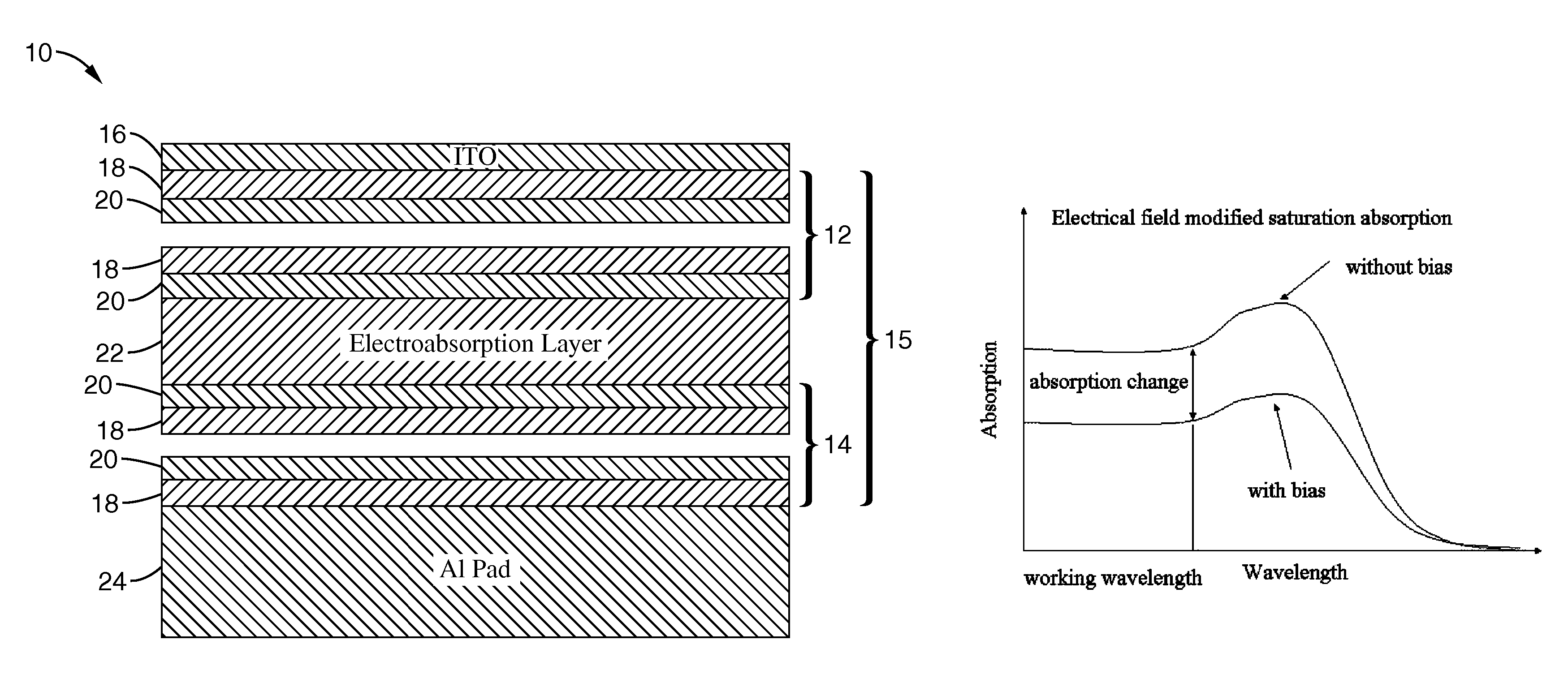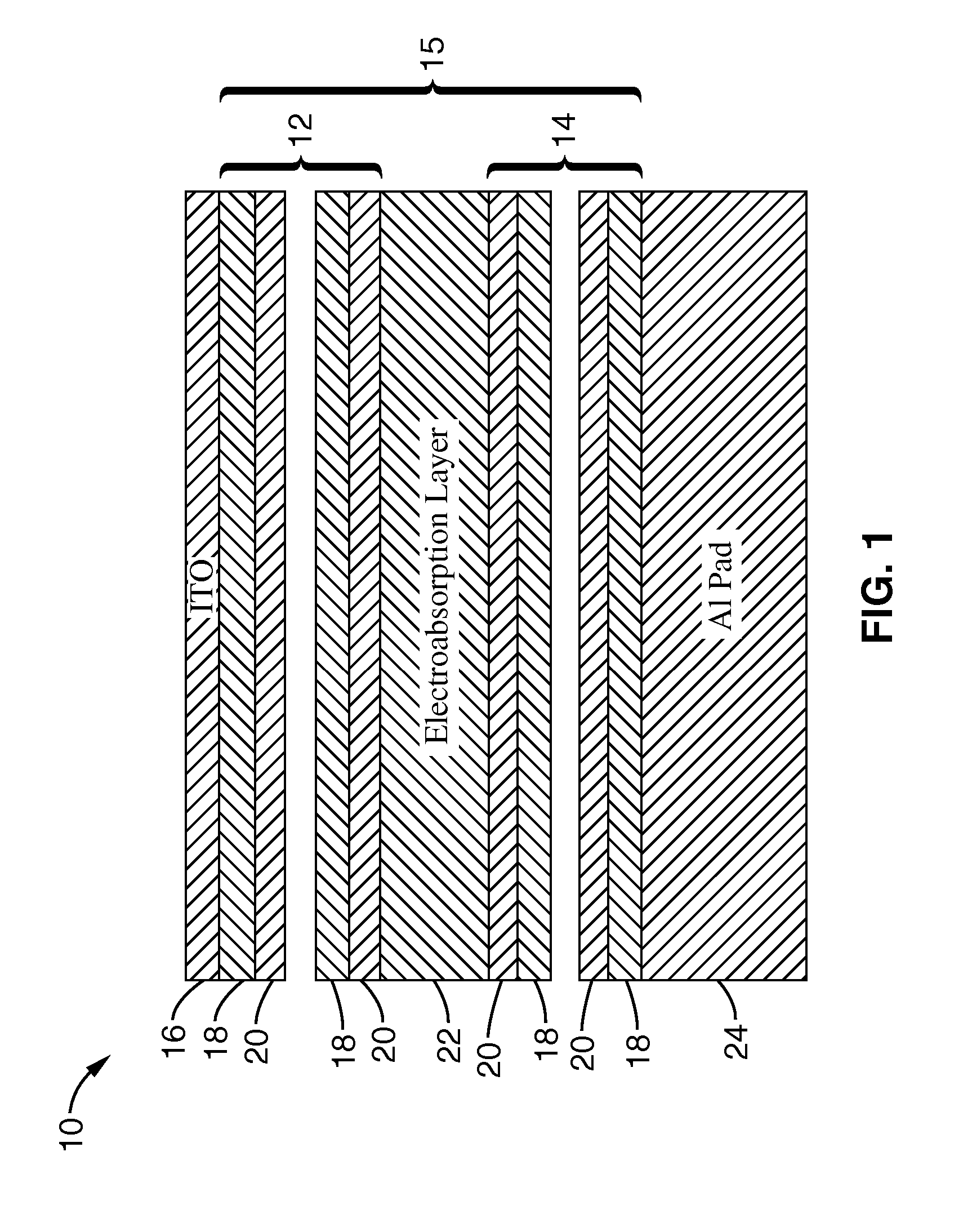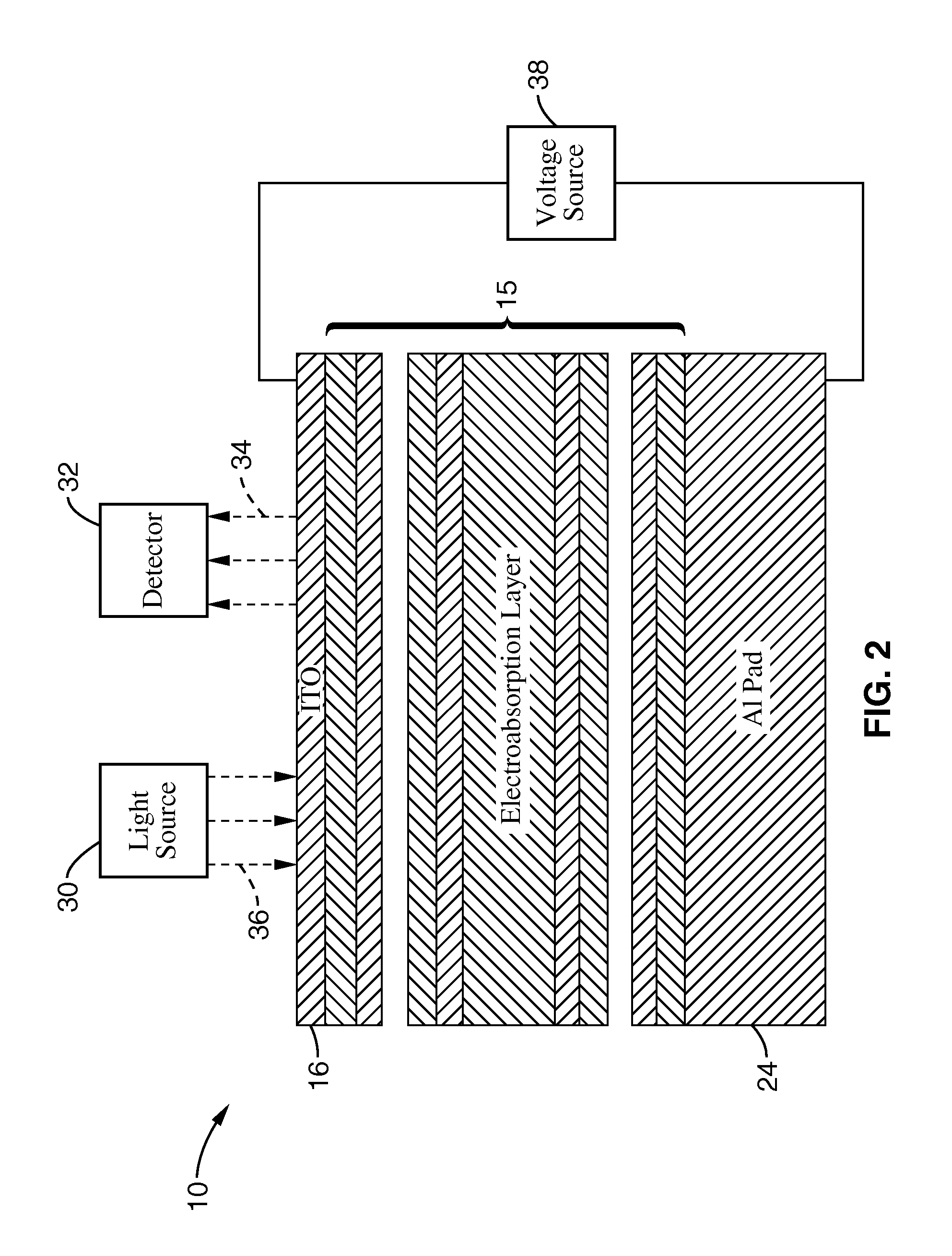Optical transceiver integratable with silicon VLSI
a transceiver and integrated technology, applied in optics, instruments, electrical apparatus, etc., can solve the problems of electrical interconnects that are subject to the trade-off between distance and bit rate, and the inability to maintain data integrity using electrical interconnects, etc., to achieve a small effect of modulator reflectivity and higher contras
- Summary
- Abstract
- Description
- Claims
- Application Information
AI Technical Summary
Benefits of technology
Problems solved by technology
Method used
Image
Examples
Embodiment Construction
[0068]Referring more specifically to the drawings, for illustrative purposes the present invention is embodied in the apparatus generally shown in FIG. 1 through FIG. 3 and FIG. 4B through FIG. 10. It will be appreciated that the apparatus may vary as to configuration and as to details of the parts, and that the method may vary as to the specific steps and sequence, without departing from the basic concepts as disclosed herein.
[0069]The present invention comprises an optical modulator that is based on electric field control of the saturation absorption threshold of semiconductor quantum dots, Si photodetectors, and an integrated optical transceiver on Si substrates. A vertical resonant cavity is used for boosting the optical power from that of a commercially available semiconductor laser by 50-100 times to the saturation intensity of the quantum dots. The optical modulator of the present invention is based on a completely new operational principles.
[0070]The modulator of the present...
PUM
| Property | Measurement | Unit |
|---|---|---|
| wavelength | aaaaa | aaaaa |
| diameter | aaaaa | aaaaa |
| length | aaaaa | aaaaa |
Abstract
Description
Claims
Application Information
 Login to View More
Login to View More - R&D
- Intellectual Property
- Life Sciences
- Materials
- Tech Scout
- Unparalleled Data Quality
- Higher Quality Content
- 60% Fewer Hallucinations
Browse by: Latest US Patents, China's latest patents, Technical Efficacy Thesaurus, Application Domain, Technology Topic, Popular Technical Reports.
© 2025 PatSnap. All rights reserved.Legal|Privacy policy|Modern Slavery Act Transparency Statement|Sitemap|About US| Contact US: help@patsnap.com



